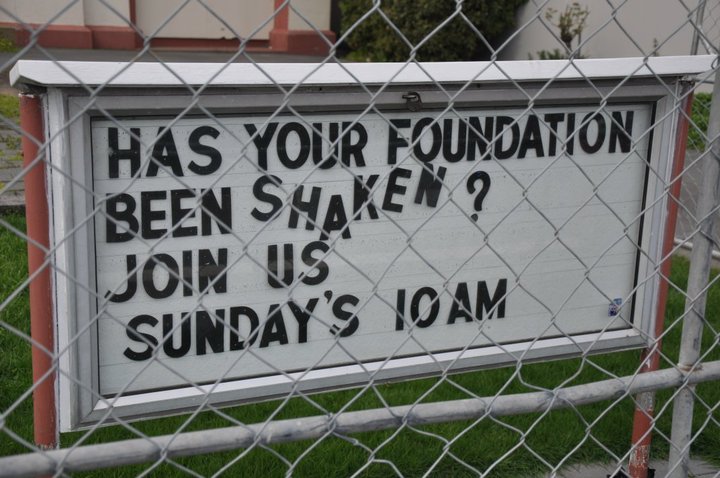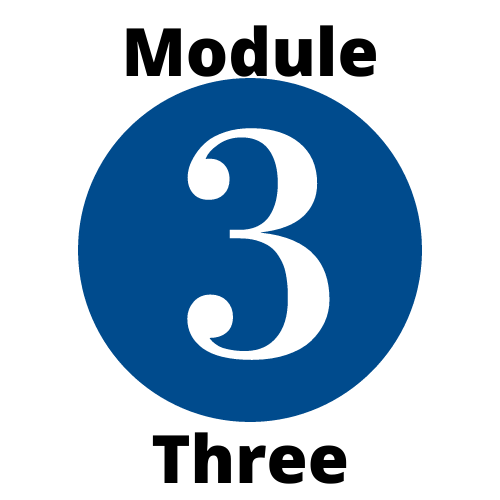Risk Response Management, Collaboration, & Coordination
| Site: | NetworkEd |
| Course: | Introduction to Emergency Management |
| Book: | Risk Response Management, Collaboration, & Coordination |
| Printed by: | Guest user |
| Date: | Saturday, 20 December 2025, 12:40 AM |
Description
Risk Response Management, Collaboration, & Coordination
Table of contents
- 1. Contemporary Response
- 2. Organisational Readiness
- 3. Community Readiness
- 4. Supporting Communities
- 5. Emergency Response Frameworks
- 6. Emergency Powers
- 7. Case Study Response Planning
- 8. Emergency Management Changes
- 9. Cooperation in Risk Reduction
- 10. International Cooperation in Disaster Response
- 11. End of Module 3
1. Contemporary Response
Welcome to Module 3: Risk Response Management, Collaboration, & Coordination
Good work making it through the first two modules! As a recap, module 1 introduced you to some basic emergency management concepts, risks, and risk analysis. Module 2 focused on community and organisational resilience, risk readiness, and risk reduction. Throughout those modules, we looked at some real world examples of emergencies, how they were managed, and the lessons learned from them.
In this module, we are going to build upon those concepts and discuss response management, collaboration, and coordination with the aim of supporting the communities and organisations within them during times of trauma and disaster.
Watch the video below (6:37 mins) which introduces you to some contemporary response measures.
1.1. Topic 1, Activity 1

Answer the following question. Although the activities in this course are not mandatory, they will prepare you to complete the certificate of achievement exam, if you elect to challenge it at the end of the course.
1.2. Additional Resources

For an outline of New Zealand's response arrangements, roles, and responsibilities, you can go to the link below:

Sydenham church noticeboard, Christchurch September 2010, following Greendale Fault earthquake.
Photo: Jon Mitchell
2. Organisational Readiness
Now that we have looked at some of the contemporary responses used in emergency management, this topic will explore how organisations can be prepared to manage emergencies by planning for and implementing such responses.
Watch the video below (3:54 mins) which should help you better understand organisational readiness as it relates to emergency management.
2.1. Topic 2, Activity 1

Answer the following question. Although the activities in this course are not mandatory, they will prepare you to complete the certificate of achievement exam, if you elect to challenge it at the end of the course.
2.2. Additional Resources

For an example of national-level guidance on readiness for emergency response and recovery, with a focus on organisational readiness, you can go to:
3. Community Readiness
In addition to organisations being prepared to manage emergencies, there are community-led aspects of Readiness for Response to emergencies which is what this topic is all about.
Watch the video below (5:24 mins) to learn more about community readiness and how it relates to emergency management.
3.1. Topic 3, Activity 1

Answer the following question. Although the activities in this course are not mandatory, they will prepare you to complete the certificate of achievement exam, if you elect to challenge it at the end of the course.
3.2. Additional Resources

The articles at the link below provide engaging accounts of community resilience in the thick of the Canterbury and Christchurch earthquakes:
4. Supporting Communities
One key component of community resilience and emergency management is the importance of communities being able to support themselves and each other in their own emergency response and recovery journeys. That is the focus of this topic.
Watch the video below (6:07 mins) to learn more about what you can do to support communities during times of emergency.
4.1. Topic 4, Activity 1

Answer the following question. Although the activities in this course are not mandatory, they will prepare you to complete the certificate of achievement exam, if you elect to challenge it at the end of the course.
4.2. Additional Resources

If you are interested in learning more about building community resilience the articles below will be a big help:
5. Emergency Response Frameworks
This topic explores the concept of Emergency Response Frameworks, through the general approaches of incident coordination systems (ICS). These frameworks are an integral component of successful emergency management.
Watch the video below (6:01 mins) to learn more about the common emergency response frameworks.
5.1. Topic 5 Activity 1

Answer the following question. Although the activities in this course are not mandatory, they will prepare you to complete the certificate of achievement exam, if you elect to challenge it at the end of the course.
5.2. Additional Resources

For an example of a contemporary, nationwide, emergency coordination system, you should check out the CIMS manual below:
6. Emergency Powers
In the previous topic, we mentioned that emergency powers are a key part of major responses. It is important to understand who might be given such powers during emergency and the range of powers that they may be given.
Watch the video below (6:21 mins) which introduces the concepts and intent of emergency powers only available when a state of emergency, disaster, or similar is declared.
6.1. Topic 6, Activity 1

Answer the following question. Although the activities in this course are not mandatory, they will prepare you to complete the certificate of achievement exam, if you elect to challenge it at the end of the course.
6.2. Topic 6, Activity 2
Discussion Forum

After watching the video on the previous page, take a moment to consider the following questions and post your responses into the 'Response and Recovery Organisations' forum.
Tip: right click on any hyperlink in the course and 'open in new window' so that you don't have to close the page your on to access the hyperlinked content.
Questions to consider for this discussion:
- What do you know now about response and recovery organisations that you hadn't considered before?
- What area of emergency management is relevant to you (or of interest to you)?
- What are the organisations that would be coordinated at a regional or state level in an emergency in that area?
**Note: Although the activities in this course are not mandatory, they will prepare you to complete the certificate of achievement exam, if you elect to challenge it at the end of the course.
6.3. Additional Resources

The "Managing Emergencies" section of New Zealand's National Emergency Management Plan, at the link below, will provide you with an example of the wider context within which emergency powers are positioned and used:
7. Case Study Response Planning
Now that we have explored risk response management, collaboration, and coordination concepts let's take a look at the development of the New Zealand influenza pandemic action plan as a case study. This plan may be very familiar to you now in this post-Covid world.
Watch the video below (6:57 mins) which explores response planning through including the consideration of the purpose, risk, frameworks, planning and readiness, roles (powers), workstreams of the response plan.
7.1. Topic 7, Activity 1

Answer the following question. Although the activities in this course are not mandatory, they will prepare you to complete the certificate of achievement exam, if you elect to challenge it at the end of the course.
7.2. Additional Resources

The New Zealand pandemic plan, first developed in 2006 and updated in 2017, is an excellent example of plans of this sort:
https://www.health.govt.nz/publication/new-zealand-influenza-pandemic-plan-framework-actionIn light of the responses to the COVID-19 pandemic the following reviews may be useful:8. Emergency Management Changes
Let's look at another real life example from our neighbours over in Australia. The bushfires of Victoria in 2009 was a huge game changer for emergency management. This is a perfect example of the on-going changes within emergency management, as it becomes a more focused and professionalised aspect of government services, corporate responsibility, and community capabilities.
Watch the video below (6:19 mins) to learn more about the emergency management measures implemented in Victoria and what we learned from the experience.
8.1. Topic 8, Activity 1

Answer the following question. Although the activities in this course are not mandatory, they will prepare you to complete the certificate of achievement exam, if you elect to challenge it at the end of the course.
8.2. Additional Resources

If you are interested in the process of ongoing reforms of emergency management internationally, the examples from Victoria, Australian, and from New Zealand are well worth a read:
- VICTORIAN EMERGENCY MANAGEMENT REFORM DECEMBER 2012 WHITE PAPER
- New Zealand Emergency Management Reform Programme Update 2019
- NEMA's After Action Review of the 2023 North Island Severe Weather Event
9. Cooperation in Risk Reduction
Building upon the case study that we just reviewed last page, this topic discusses cooperation and international risk reduction. Increasing impacts experienced from rapid population increase, increase technology, and increased disasters and costs on systems are some of the driving forces for international cooperation to reduce risk.
Watch the video below (5:45 mins) which should help you learn more about the complexities and opportunities of cooperative approaches to disaster risk reduction.
9.1. Topic 9, Activity 1

Answer the following question. Although the activities in this course are not mandatory, they will prepare you to complete the certificate of achievement exam, if you elect to challenge it at the end of the course.
9.2. Topic 9, Activity 2
Discussion Forum

After watching the video on the previous page, take a moment to consider the following questions and post your responses into the 'Risk and Response Management, Collaboration and Coordination' forum.
Tip: right click on any hyperlink in the course and 'open in new window' so that you don't have to close the page your on to access the hyperlinked content.
Questions to consider for this discussion:
- What do you know now about risk and response management, collaboration and coordination that you hadn't considered before?
- Provide an example from the topic that made you really think deeper about risk and response management, collaboration or coordination. Why?
**Note: Although the activities in this course are not mandatory, they will prepare you to complete the certificate of achievement exam, if you elect to challenge it at the end of the course.
9.3. Additional Resources

If you are interested in learning more about the Sendai Framework, what better place to go than the document itself?
For an example of national application of commitments to the Sendai Framework:- New Zealand National Disaster Resilience Strategy
10. International Cooperation in Disaster Response
In the previous topic, we discussed the need for cooperation in risk reduction. This goes hand in hand with the need to cooperate in international disaster response. Remember that communities are not just local communities.
Watch the video below (5:59 mins) that introduces the concepts and arrangements for international disaster response.
10.1. Topic 10, Activity 1

Answer the following question. Although the activities in this course are not mandatory, they will prepare you to complete the certificate of achievement exam, if you elect to challenge it at the end of the course.
10.2. Additional Resources

If you would like to learn about and keep in touch the United Nations coordination and capability building of response capabilities please go to the link below:
11. End of Module 3
Congratulations!

You should have received a Module 3 completion badge. Great work!
You should now have access to Module 4: Emergency/Disaster Recovery
**Note: If for some reason you are not able to access Module 4, make sure that you have viewed each page in this book.

In addition to being able to access the next module, you will also see the list of discussion forums found within this topic so that you can easily access them throughout the course if you want to.
